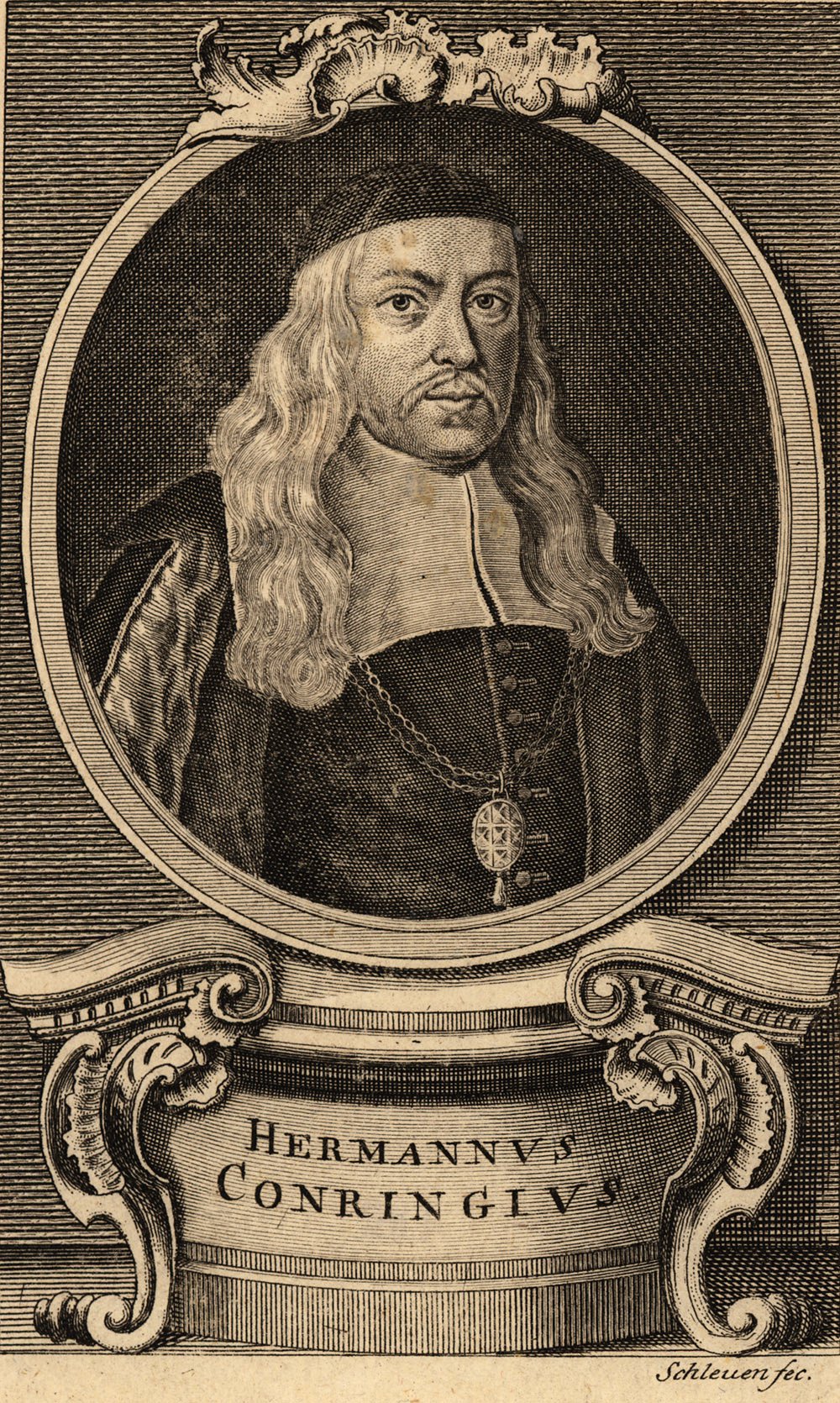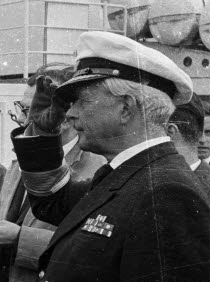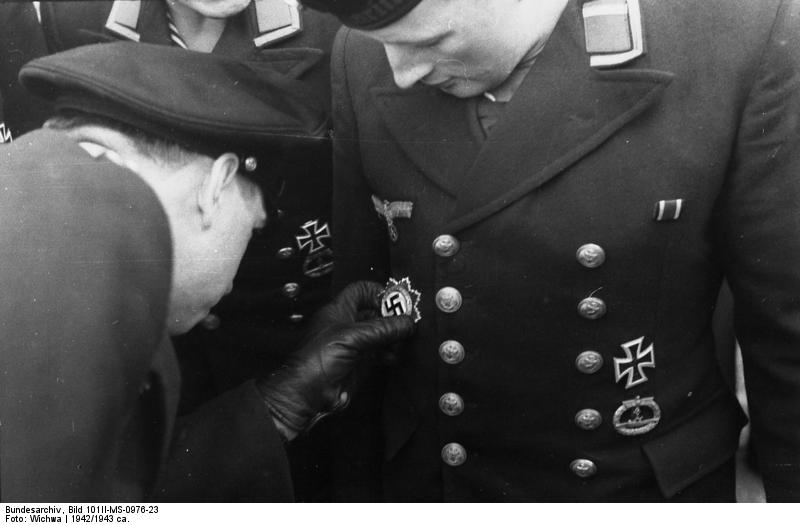|
Otto Ites
Otto Christian Ites (5 February 1918 – 2 February 1982) was a German naval officer, serving first as a submarine commander with the '' Kriegsmarine'' during World War II, and later as ''Konteradmiral'' with the ''Bundesmarine''. Career Otto Ites, born on 5 February 1918 in Norden in the Province of Hanover a Free State of Prussia, joined the military service of the '' Kriegsmarine'' on 3 April 1936. From 3 April 1938 until 2 October 1939, he served on the torpedo boats ''Kondor'' and ''Albatros'' in the 4th and 6th Torpedo Boat Flotilla. Ites served as second watch officer on nine war patrols on , the first five patrols under the command of Herbert Schultze, two patrols under Hans-Rudolf Rösing and two patrols under Heinrich Bleichrodt. Promoted to ''Oberleutnant zur See'' on 1 October 1940 and he was made first watch officer on ''U-48''. In this position he went on one more patrol (10 November 1940 – 13 March 1941), ''U-48'' now again under the command of Schultze. He ... [...More Info...] [...Related Items...] OR: [Wikipedia] [Google] [Baidu] |
Norden, Lower Saxony
Norden (East Frisian Low Saxon: ''Nörden'') is a town in the district of Aurich, in Lower Saxony, Germany. It is situated near the North Sea shore, in East Frisia. Town and land use Norden consists of the town itself and ten official subdistricts. In addition to the old town centre, the main town includes the former municipality of Sandbauerschaft and the subdistricts Ekel, Lintel and Westgaste. They are divided into various quarters and residential areas such as Neustadt, Westlintel, Ostlintel, Ekelergaste, In der Wirde, Vierzig Diemat, Martensdorf, or "millionaire quarter". They have in common that they do not have any administrative function, but are places referred to in everyday local language. The other subdistricts are Bargebur, Leybuchtpolder, Norddeich (which bore the name '' Lintelermarsch'' until 1972), Westermarsch I, Westermarsch II, Southderneuland I, Southderneuland II and Tidofeld. The main town and the villages of Bargebur, Norddeich, Süderneneulan ... [...More Info...] [...Related Items...] OR: [Wikipedia] [Google] [Baidu] |
Hans-Rudolf Rösing
Hans-Rudolf Rösing (28 September 1905 – 16 December 2004) was a German U-boat commander in World War II and later served in the Bundesmarine of the Federal Republic of Germany. He was a recipient of the Knight's Cross of the Iron Cross, of Nazi Germany. Early life and pre-war service Rösing was born on 28 September 1905 in Wilhelmshaven, at the time an exclave of the Province of Hanover, a province of the Kingdom of Prussia. He was the son of ''Vizeadmiral'' Bernhard Rösing (1869–1947) and his wife Elfriede, née Wünsche (1882–1961). He had three brothers, Wilhelm, Kurt-Wolf and Bernhard, all killed during World War II, and a sister named Elfriede. He joined the ''Reichsmarine'' on 31 March 1924. During this training period he advanced in rank to '' Fähnrich zur See'' (officer cadet) on 1 April 1926. Following additional, land based trainings he was stationed on for 13 months (9 January 1928 – 10 March 1929). While stationed on ''Nymphe'' he was commissioned ... [...More Info...] [...Related Items...] OR: [Wikipedia] [Google] [Baidu] |
Günter Kuhnke
Günter Kuhnke (7 September 1912 – 11 October 1990) was a German submarine commander during World War II and later a Konteradmiral with the Bundesmarine, West Germany's navy. He was a recipient of the Knight's Cross of the Iron Cross of Nazi Germany. Career Kuhnke commanded the , and , sinking eleven ships on nine patrols, for a total of of Allied shipping plus the special service vessel HMS ''Prunella''. He commanded '' 10th U-boat Flotilla'' from January 1942 until October 1944, then ''33rd U-boat Flotilla'' until May 1945. Kuhnke joined Bundesmarine in 1955. commanded the destroyer ''Z-2'' (D171) (formerly USS ''Ringgold'' (DD-500)) from 14 July 1959 until 15 November 1960. In 1966, he was promoted to Konteradmiral (rear admiral) in 1966. Kuhnke retired from service in September 1972. Awards * Wehrmacht Long Service Award, 4th class (2 October 1936)Busch and Röll 2003, p. 67. * Iron Cross (1939) ** 2nd Class (29 September 1939) ** 1st Class (1 October 1939) * War Merit ... [...More Info...] [...Related Items...] OR: [Wikipedia] [Google] [Baidu] |
The History Press
The History Press is a British publishing company specialising in the publication of titles devoted to local and specialist history. It claims to be the United Kingdom's largest independent publisher in this field, publishing approximately 300 books per year and with a backlist of over 12,000 titles. Created in December 2007, The History Press integrated core elements of the NPI Media Group within it, including all existing published titles, plus all the future contracts and publishing rights contained in them. At the time of founding, the imprints included Phillimore, Pitkin Publishing, Spellmount, Stadia, Sutton Publishing, Tempus Publishing and Nonsuch. History The roots of The History Press's publishing heritage can be traced back to 1897 when William Phillimore founded a publishing business which still carries his name, however the company itself evolved from the amalgamation of multiple smaller publishing houses in 2007 that formed part of the NPI Media Group. The lar ... [...More Info...] [...Related Items...] OR: [Wikipedia] [Google] [Baidu] |
U-boat War Badge
The U-boat War Badge (german: U-Boot-Kriegsabzeichen) was a German war badge that was awarded to U-boat crew members during World War I and World War II. History The ''U-boat War Badge'' was originally instituted during the First World War on February 1, 1918. It was awarded to recognize U-boat crews who had completed three war patrols. The badge was worn on the lower left side of the uniform and was oval shaped resembling a wreath of laurel leaves. A submarine lay across the center and the German State Crown (Reichskrone) was inlaid at the top center of the wreath. On October 13, 1939, the ''U-boat War Badge'' was reinstituted. It was very similar to the original badge with the exception of the imperial crown being replaced with a German Eagle above a swastika, and a more modernized submarine now facing towards the left was used. The new version was first made of bronze metal, with later ones made of zinc with a "gold wash". Classes The award was bestowed in two classes: U- ... [...More Info...] [...Related Items...] OR: [Wikipedia] [Google] [Baidu] |
Iron Cross
The Iron Cross (german: link=no, Eisernes Kreuz, , abbreviated EK) was a military decoration in the Kingdom of Prussia, and later in the German Empire (1871–1918) and Nazi Germany (1933–1945). King Frederick William III of Prussia established it on 17 March 1813 during the Napoleonic Wars (EK 1813). The award was backdated to the birthday (10 March) of his late wife, Queen Louise. Louise was the first person to receive this decoration (posthumously). Recommissioned Iron Cross was also awarded during the Franco-Prussian War (EK 1870), World War I (EK 1914), and World War II (EK 1939). During the 1930s and World War II, the Nazi regime superimposed a swastika on the traditional medal. The Iron Cross was usually a military decoration only, though there were instances awarded to civilians for performing military functions, including Hanna Reitsch, who received the Iron Cross, 2nd class, and Iron Cross, 1st Class, and Melitta Schenk Gräfin von Stauffenberg, who receiv ... [...More Info...] [...Related Items...] OR: [Wikipedia] [Google] [Baidu] |
Fregattenkapitän
Fregattenkapitän, short: FKpt / in lists: FK, () is the middle field officer rank () in the German Navy. Address In line with ZDv 10/8, the official manner of formally addressing military personnel holding the rank of ''Fregattenkapitän'' (OF-4) is “Herr/Frau Fregattenkapitän“. However, following German naval tradition the “Fregattenkapitän“ is usually addressed as „Herr/Frau Kapitän“ or in seamen's language as „Herr/Frau Kap'tän“. Rank Insignia and Rating Rank insignia ''Fregattenkapitän'', worn on the sleeves and shoulders, are one five-pointed star above three stripes and a half stripe between stripe two and one (or rings on sleeves; without the star when rank loops are worn). The rank is rated OF-4 in NATO, and is equivalent to Oberstleutnant in Heer, and Luftwaffe. It is domiciled at the A14 and A15 pay scale of the Federal Ministry of Defence and is senior to the rank of Korvettenkapitän (NATO OF-3 - ''Commander Junior Grade''). It is of ... [...More Info...] [...Related Items...] OR: [Wikipedia] [Google] [Baidu] |
University Of Bonn
The Rhenish Friedrich Wilhelm University of Bonn (german: Rheinische Friedrich-Wilhelms-Universität Bonn) is a public research university located in Bonn, North Rhine-Westphalia, Germany. It was founded in its present form as the ( en, Rhine University) on 18 October 1818 by Frederick William III, as the linear successor of the ( en, Academy of the Prince-elector of Cologne) which was founded in 1777. The University of Bonn offers many undergraduate and graduate programs in a range of subjects and has 544 professors. The University of Bonn is a member of the German U15 association of major research-intensive universities in Germany and has the title of "University of Excellence" under the German Universities Excellence Initiative; it is consistently ranked amongst the best German universities in the world rankings and is one of the most research intensive universities in Germany. Bonn has 6 Clusters of Excellence, the most of any German university; the Hausdorff Center fo ... [...More Info...] [...Related Items...] OR: [Wikipedia] [Google] [Baidu] |
Matriculated
Matriculation is the formal process of entering a university, or of becoming eligible to enter by fulfilling certain academic requirements such as a matriculation examination. Australia In Australia, the term "matriculation" is seldom used now. In the late 1960s and early 1970s, all states replaced the matriculation examination with either a certificate, such as the Higher School Certificate (HSC) in Victoria and NSW, or a university entrance exam such as the Tertiary Entrance Exam in Western Australia. These have all been renamed (except in NSW) as a state-based certificate, such as the Victorian Certificate of Education (VCE) or the Western Australian Certificate of Education (WACE). Bangladesh In Bangladesh, the "Matriculation" is the Secondary School Examination (SSC) taken at year 10, and the Intermediate Exams is the Higher Secondary Examination (HSC) taken at year 12. Bangladesh, like the rest of Indian sub-continent, still uses terms such as Matriculation Exams and In ... [...More Info...] [...Related Items...] OR: [Wikipedia] [Google] [Baidu] |
Tennessee
Tennessee ( , ), officially the State of Tennessee, is a landlocked state in the Southeastern region of the United States. Tennessee is the 36th-largest by area and the 15th-most populous of the 50 states. It is bordered by Kentucky to the north, Virginia to the northeast, North Carolina to the east, Georgia, Alabama, and Mississippi to the south, Arkansas to the southwest, and Missouri to the northwest. Tennessee is geographically, culturally, and legally divided into three Grand Divisions of East, Middle, and West Tennessee. Nashville is the state's capital and largest city, and anchors its largest metropolitan area. Other major cities include Memphis, Knoxville, Chattanooga, and Clarksville. Tennessee's population as of the 2020 United States census is approximately 6.9 million. Tennessee is rooted in the Watauga Association, a 1772 frontier pact generally regarded as the first constitutional government west of the Appalachian Mountains. Its name derives from " Ta ... [...More Info...] [...Related Items...] OR: [Wikipedia] [Google] [Baidu] |
Prisoner Of War
A prisoner of war (POW) is a person who is held captive by a belligerent power during or immediately after an armed conflict. The earliest recorded usage of the phrase "prisoner of war" dates back to 1610. Belligerents hold prisoners of war in custody for a range of legitimate and illegitimate reasons, such as isolating them from the enemy combatants still in the field (releasing and repatriating them in an orderly manner after hostilities), demonstrating military victory, punishing them, prosecuting them for war crimes, exploiting them for their labour, recruiting or even conscripting them as their own combatants, collecting military and political intelligence from them, or indoctrinating them in new political or religious beliefs. Ancient times For most of human history, depending on the culture of the victors, enemy fighters on the losing side in a battle who had surrendered and been taken as prisoners of war could expect to be either slaughtered or enslaved. E ... [...More Info...] [...Related Items...] OR: [Wikipedia] [Google] [Baidu] |
VP-92
Patrol Squadron 92 (VP-92) is a former U.S. Navy Reserve patrol squadron. Established on 1 November 1970, it was disestablished on 17 October 2007. It was the second squadron to be designated VP-92, the first VP-92 was redesignated VPB-92 on 1 October 1944. History *1 November 1970: VP-92 was established at NAS South Weymouth, Massachusetts, as a naval air reserve land-based patrol squadron flying 12 Lockheed SP-2H Neptunes. The new squadron came under the operational and administrative control of Commander Naval Air Reserve Force and Commander Fleet Air Reserve Wings, Atlantic. VP-92 was established as a result of a major reorganization of Naval Air Reserve that took place in mid-1970. Under the Reserve Force Squadron concept 12 land-based naval reserve patrol squadrons were formed and structured along the lines of regular Navy squadrons with nearly identical organization and manning levels. The 12/2/1 concept had 12 VP squadrons under two commands, COMFAIRESWINGLANT and COMFAIR ... [...More Info...] [...Related Items...] OR: [Wikipedia] [Google] [Baidu] |








